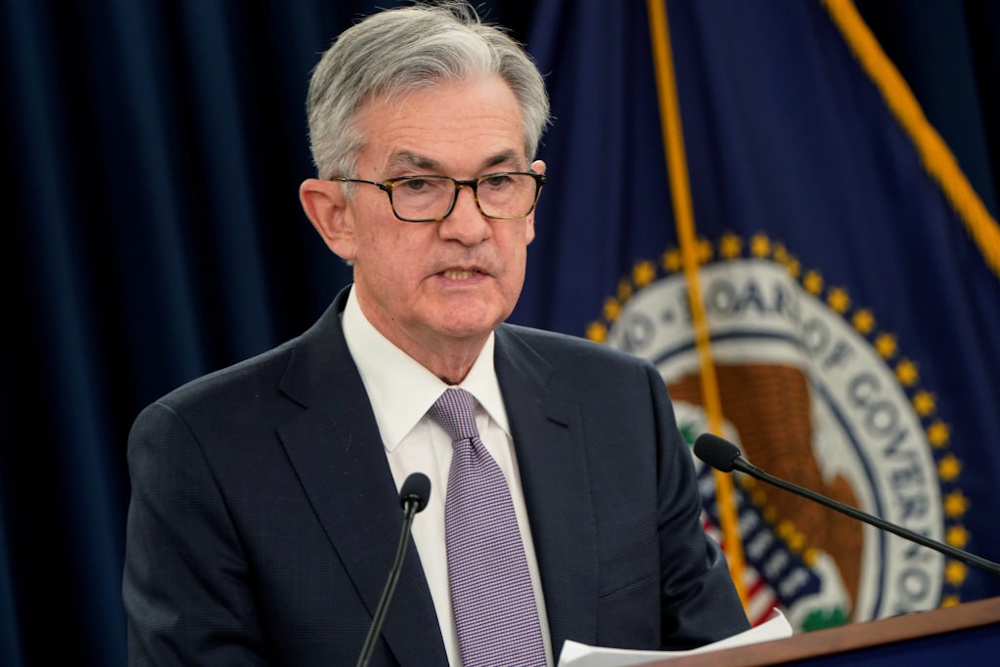
The Federal Reserve on Wednesday reduced interest rates for the second occasion this year in an ongoing effort to avert a significant rise in unemployment. However, another rate cut at the upcoming December meeting “is not a forgone conclusion,” stated Fed Chair Jerome Powell, noting that there were “strongly differing views” among policymakers regarding the path ahead. Federal Reserve officials have decided to implement an additional quarter-point reduction in interest rates, bringing their benchmark lending rate down to a range of 3.75% to 4%, marking the lowest level observed in three years. Wednesday’s decision attracted two dissenting opinions; one from Fed Governor Stephen Miran, who advocated for a more substantial, half-point reduction; and another from Kansas City Fed President Jeffrey Schmid, who favored maintaining current borrowing costs. This marks the first occurrence since 2019 of competing dissents, each advocating for either looser or stricter policy measures. This situation highlights the intense discussion among officials regarding the impact of President Donald Trump’s extensive policies on trade, immigration, and fiscal spending on the US economy. To complicate matters further, this was also the first instance in which officials have established monetary policy without the benefit of a complete month of essential government employment data in the contemporary era.
Central bankers initiated a reduction in rates last month following data through August that indicated employers were increasing jobs at the slowest rate since 2010. Prominent corporations like Amazon and Target have recently disclosed plans for significant layoffs, affecting tens of thousands of employees. The issue at hand is that an extended government shutdown may hinder the possibility of additional rate cuts, particularly as certain officials, including Schmid, express concerns regarding ongoing inflationary pressures within the economy. “What actions should one take when navigating through foggy driving conditions?” “You slow down,” Powell stated. Powell emphasized that the Federal Reserve lacks a comprehensive understanding of the economy’s health in the absence of government data. The Federal Reserve’s most recent policy statement indicated that “more recent indicators” were “consistent” with prior data, prior to the shutdown, which revealed weak hiring and a slight uptick in unemployment. Powell articulated this point during the question-and-answer session with reporters. “There’s simply no narrative over the past four weeks; it’s rather stable,” he stated. “There is no evidence indicating that the job market, or any sector of the economy, is experiencing a notable decline.” Data released this week indicated that hiring experienced an uptick in September, yet it continued to exhibit weakness. Despite the notable layoff announcements in recent weeks, this does not necessarily equate to an immediate rise in unemployment levels. Workers who have experienced layoffs occasionally obtain substantial severance packages. Powell stated that private data cannot substitute for government figures, which are commonly regarded as the “gold standard” for assessing the world’s largest economy.
The ongoing lack of those figures may jeopardize the prospects for future rate reductions. “There’s a possibility that it would make sense to be more cautious,” Powell stated. Powell addresses the persistent issue of tariff-induced inflation. Powell indicated that the inflation situation continues to be unclear. Thus far, inflation has not experienced a significant increase as a result of the newly implemented tariffs, as indicated by the most recent Consumer Price Index. This stability can be attributed to businesses effectively managing elevated costs without transferring these expenses onto consumers. The head of the Federal Reserve indicated that officials anticipate “that there will be some additional increased inflation because it takes a while for tariffs to work their way through the production chain and, finally, get to consumers.” There is a prevailing consensus among economists that tariff-induced inflation is likely to accelerate, particularly if Trump follows through on his recent threats regarding tariffs. The September CPI, released last week amid the shutdown, indicated a cooler outcome than anticipated by analysts for Social Security’s cost-of-living adjustment. However, it also revealed ongoing price pressures that may intensify due to Trump’s tariffs. Trump is scheduled to meet with his Chinese counterpart Xi Jingping late Wednesday US time for a comprehensive discussion in South Korea, which is expected to encompass a potential US-China trade agreement. Powell emphasized that there exists a “reasonable” expectation that tariff inflation could be transient, which facilitated the decision for September’s rate cut.
However, it would also remain uncertain if the October CPI, set to be released on November 13, is not published due to the continuation of the shutdown. Federal Reserve officials typically reference the Personal Consumption Expenditures price index, recognized as their favored gauge of inflation; however, this data has also not been made available owing to the shutdown. Powell indicated that once the tariffs are implemented, the expectation is that “they stop generating inflation,” signifying a temporary impact. “This is how we believe and hope that it will work out,” Powell stated. In a distinct resolution, policymakers declared the conclusion of a three-year endeavor aimed at reducing the magnitude of their substantial portfolio by December 1. The Fed’s portfolio, or balance sheet, peaked at approximately $9 trillion in mid-2022, but has since contracted to around $6.6 trillion following a deliberate strategy to unwind the stimulus measures implemented during the Great Recession and the Covid-19 pandemic. This instrument operates subtly in the background, complementing the Federal Reserve’s primary interest rate, which undertakes the significant effort to fulfill its macroeconomic objectives. Officials have assessed that the balance sheet is nearing a more typical condition.

